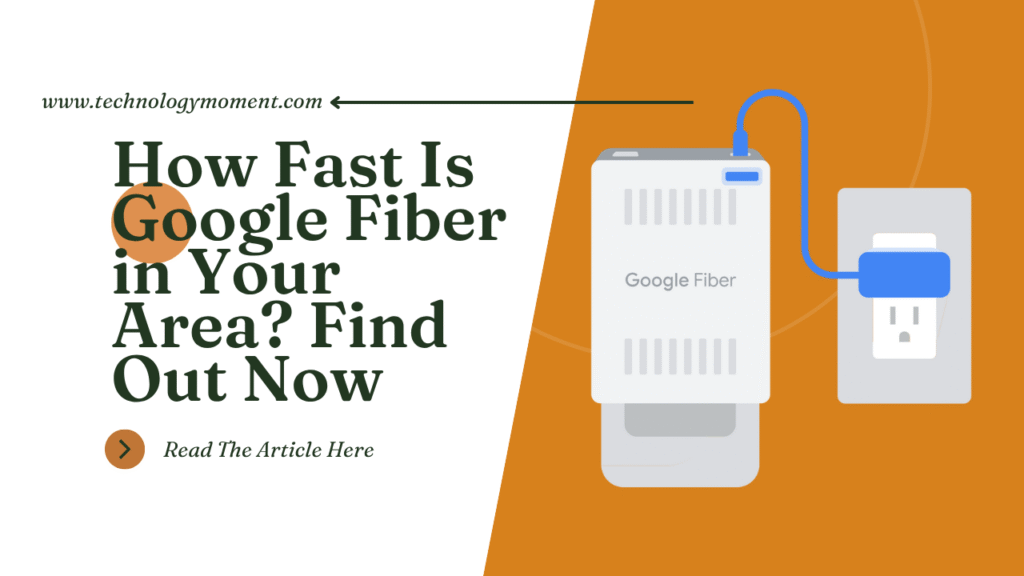In today’s fast-paced digital world, our inboxes often become cluttered with a never-ending stream of emails. Whether it’s newsletters, promotional offers, or old correspondence, managing an overflowing inbox can quickly become overwhelming. But fear not—Gmail offers powerful tools to help you regain control and clean up your digital space with ease. In this “Technology Moment,” we’ll walk you through the steps to efficiently mass delete emails in Gmail, transforming your inbox from a chaotic mess into a streamlined, organized hub. Say goodbye to email overload and hello to a more manageable and stress-free email experience. Let’s dive into the tools and techniques that will help you declutter your inbox in no time!
Boost Your Inbox Smiles with These Clever Funny Email Sign Offs
Gmail, being one of the most widely used email services, often ends up as a repository for countless messages, from critical work emails to promotional offers and social media notifications. Over time, this accumulation can lead to an overwhelming inbox that becomes difficult to manage.
The issue of email clutter is not just about aesthetics or personal preference. It can significantly impact productivity, as important emails get buried under a mountain of less critical ones. Searching for specific messages can become time-consuming and frustrating. Furthermore, Gmail provides a finite amount of storage space—15 GB shared across all Google services—which can quickly fill up if not managed properly. When this limit is reached, you might miss out on receiving important emails or have to resort to purchasing additional storage.
Managing your Gmail inbox is not merely about avoiding a cluttered interface; it is about ensuring that you can efficiently access the information you need when you need it. A well-organized inbox allows for better workflow management, reduces stress, and enhances your overall digital experience. This article aims to provide you with a comprehensive guide on how to mass delete emails on Gmail, helping you to clean up your inbox effectively and maintain it in an organized state.
By the end of this guide, you will have the tools and knowledge to free up storage space, improve your email organization, and significantly reduce digital clutter. Whether you are looking to delete old emails, remove messages from specific senders, or get rid of unread emails, this step-by-step tutorial will cover all the necessary techniques. Let’s dive in and take the first step towards a cleaner, more manageable Gmail inbox.
Table of Contents
Why You Might Want to Mass Delete Emails
Managing your email inbox effectively is crucial for maintaining productivity and reducing stress. Here’s why mass deleting emails can be particularly beneficial:
Free Up Storage Space
Gmail offers 15 GB of free storage, which is shared across all Google services, including Google Drive and Google Photos. Over time, your inbox can fill up with newsletters, promotions, social media notifications, and other non-essential emails, consuming valuable storage space. Mass deleting these emails can:
- Prevent Overcrowding: By regularly cleaning out your inbox, you avoid hitting the storage limit, ensuring your Gmail account remains functional without interruptions.
- Optimize Performance: A lighter inbox can improve the performance and loading speed of your email, making it easier and faster to navigate through important messages.
- Save Costs: Avoid the need to purchase additional storage space from Google by managing your existing space more efficiently.
Improve Email Organization
A cluttered inbox can be overwhelming and makes it difficult to locate important emails when you need them. Mass deleting unnecessary emails helps:
- Enhance Search Efficiency: With fewer emails to sift through, finding specific messages becomes quicker and easier, especially when you’re in a hurry.
- Simplify Inbox Management: A cleaner inbox allows you to prioritize and manage essential emails more effectively, reducing the chances of missing critical communications.
- Reduce Stress: A well-organized inbox can alleviate the anxiety that comes from feeling overwhelmed by a sea of unread or irrelevant messages.
Reduce Digital Clutter
Just like physical clutter, digital clutter can have a negative impact on your mental well-being and productivity. Mass deleting emails contributes to:
- Mental Clarity: An organized digital space can help clear your mind, allowing you to focus better on tasks and projects.
- Efficiency: You spend less time managing and sorting through emails, giving you more time to focus on important work and personal activities.
- Better Habit Formation: Regularly cleaning out your inbox can help you develop better digital habits, such as being more selective about the emails you subscribe to and promptly deleting unnecessary messages.
Preparing to Mass Delete Emails
Before diving into the process of mass deleting emails on Gmail, it’s crucial to prepare adequately. Proper preparation ensures that you don’t accidentally lose important information and makes the deletion process smoother and more efficient. Here are the steps to prepare for mass deleting emails:
Backing Up Important Emails
Why Backup Matters:
While mass deleting emails can significantly declutter your inbox, there’s always a risk of deleting something important. Backing up your emails ensures you have a copy of essential messages that you might need in the future.
How to Backup Emails:
- Use Google Takeout:
- Step 1: Go to Google Takeout.
- Step 2: To back up Gmail, make sure the “Mail” option is checked.
- Step 3: Choose your preferred delivery method (e.g., download link via email).
- Step 4: Click on “Create export” and wait for Google to compile your data. This process might take some time depending on the size of your email archive.
- Step 5: Once the export is ready, download the file to your computer.
- Forward Important Emails:
- If you only need to back up a few critical emails, you can forward them to another email account. This method is quick and ensures that your most important emails are preserved.
- Use an Email Client:
- Set up an email client like Microsoft Outlook or Mozilla Thunderbird to download your emails to your computer. These clients can archive your emails locally, providing an additional layer of backup.
Understanding Gmail’s Email Deletion Process
How Deletion Works in Gmail:
Before you start deleting emails, it’s important to understand how Gmail’s deletion process works. When you delete an email in Gmail, it doesn’t immediately disappear; instead, it moves to the Trash folder.
- Trash Folder:
- Deleted emails are moved to the Trash folder, where they remain for 30 days. During this period, you can recover any mistakenly deleted emails.
- Permanent Deletion:
- After 30 days in the Trash, emails are permanently deleted and cannot be recovered. If you need to free up space immediately, you can manually empty the Trash folder.
- Archiving vs. Deleting:
- Gmail offers an archiving feature that removes emails from your inbox without deleting them. Archived emails are still accessible via search and can be moved back to the inbox if needed. This is a safer option if you’re unsure about deleting certain emails.
Setting Up Labels and Filters:
Before mass deleting emails, consider setting up labels and filters to organize your emails. This organization helps identify which emails to keep and which to delete.
- Creating Labels:
- Labels act like folders and help categorize your emails. For instance, you can create labels like “Work,” “Personal,” “Receipts,” and “Important” to organize your emails.
- Applying Filters:
- Filters automatically sort incoming emails based on criteria like sender, subject, keywords, and date. You can set up filters to label, archive, or delete emails, making it easier to manage your inbox.
Example Filter Setup:
- Step 1: Click on the gear icon in Gmail and select “See all settings.”
- Step 2: Select the tab labeled “Filters and Blocked Addresses”
- Step 3: Click “Create a new filter” and enter your criteria (e.g., emails from a specific sender or containing certain keywords).
- Step 4: Choose an action for the filter (e.g., delete, archive, label).
- Step 5: Click “Create filter” to apply it.
Using Gmail’s Search Function to Find Emails
Gmail’s search function is a powerful tool that can help you locate specific emails quickly and efficiently. By mastering both basic and advanced search queries, you can streamline the process of finding and mass deleting emails. Here’s a detailed guide on how to use Gmail’s search function effectively:
Basic Search Queries
At its core, Gmail’s search function works similarly to a search engine. You can type keywords, phrases, or email addresses into the search bar to find relevant emails. Here are some basic search queries to get you started:
- Keyword Search: Type specific words or phrases related to the emails you want to find. For example, typing “invoice” will display all emails containing the word “invoice.”
- Email Address Search: Enter an email address to find all messages sent from or received by that address. For instance, typing “john.doe@example.com” will show emails associated with John Doe.
- Subject Search: For example, “subject” will display emails with “meeting” in the subject line.
Advanced Search Operators
For more refined searches, Gmail offers advanced search operators that can help you narrow down your results. Here are some of the most useful ones:
- From: Searches for emails sent by a specific person. Example:
from:john.doe@example.com - To: Searches for emails sent to a specific person. Example:
to:jane.doe@example.com - Subject: Searches for keywords in the email subject. Example:
subject:report - Has: Finds emails with attachments. Example:
has:attachment - Label: Searches within a specific label. Example:
label:work - Before: Finds emails sent before a specific date. Example:
before:2023/01/01 - After: Finds emails sent after a specific date. Example:
after:2023/01/01 - Older_than: Finds emails older than a certain time period.
- Newer_than: Finds emails newer than a certain time period. Example:
newer_than:1d(emails newer than one day)
Combining these operators can make your searches even more precise. For instance, to find emails from John Doe sent before January 1, 2023, you would type: from:john.doe@example.com before:2023/01/01.
Step-by-Step Guide to Finding Emails
- Open Gmail: Log in to your Gmail account.
- Locate the Search Bar: At the top of the page, you’ll find the search bar.
- Enter Your Query: Type your search query using basic keywords or advanced operators.
- Review the Results: Gmail will display emails that match your search criteria. You can refine your search further if needed.
Using Filters for Mass Deletion
Once you’ve located the emails you want to delete, you can use filters to select them in bulk:
- Perform a Search: Use the search bar to find the emails you want to delete.
- Select All Results: Click the checkbox at the top left corner of the email list to select all displayed emails.
- Select All Conversations: If your search returns more emails than can be displayed on one page, Gmail will prompt you to select all conversations that match the search. Click this option to select all relevant emails.
- Delete: Click the trash icon to delete the selected emails.
Tips for Effective Searching
- Use Quotation Marks: For example,
"meeting agenda"will find emails containing that exact phrase. - Experiment with Operators: Combine different operators to refine your search and locate exactly what you need.
Mass Deleting Emails by Date
One of the most efficient ways to clean up your Gmail inbox is by deleting emails based on their date. This method allows you to remove large chunks of old emails quickly, which can significantly reduce the clutter in your inbox.

Deleting Emails Older Than a Certain Date
Gmail allows you to search for emails that are older than a specific date. This is particularly useful if you want to clear out old emails that you no longer need. For instance, you might want to delete all emails that are older than one year.
To do this, you can use Gmail’s search function with a date-specific query. Here’s a step-by-step guide:
- Open Gmail and Sign In:
- Start by opening your Gmail account and signing in with your credentials.
- Use the Search Bar:
- At the top of the Gmail interface, you’ll see a search bar. This is where you’ll input your date-specific search query.
- Enter the Search Query:
- To find emails older than a specific date, you can use the
before:operator followed by the date inYYYY/MM/DDformat. For example, to find emails before January 1, 2023, you would enter:
- To find emails older than a specific date, you can use the
- Review the Search Results:
- Gmail will display all emails that were received before the specified date. Review these emails to ensure you don’t accidentally delete any important ones.
- Select All Emails:
- To select all the emails in the search results, click the checkbox at the top left of the email list. Gmail will select up to 50 emails by default.
- Select All Conversations:
- If you have more than 50 emails, Gmail will display a message saying, “All 50 conversations on this page are selected.” Click the link that says, “Select all conversations that match this search” to select all emails matching your search query.
- Delete the Emails:
- Once all relevant emails are selected, click the trash can icon to delete them.
- Empty the Trash:
- To permanently delete these emails and free up storage space, go to the Trash folder and click “Empty Trash now.” Be cautious, as this action cannot be undone.
Mass Deleting Emails from Specific Senders
Clearing out emails from specific senders is a powerful way to declutter your inbox, especially if you frequently receive emails from particular sources. Whether it’s newsletters, promotional messages, or updates from a service you no longer use, targeting these emails can help you clean up your inbox efficiently. Here’s how you can do it:
Identifying Frequent Senders
Before you start deleting, identify the senders who flood your inbox. Look for newsletters, marketing emails, or notifications from services you rarely use. A quick scan through your inbox can help you pinpoint these frequent senders.
Using Sender-Specific Search Queries
Gmail’s search functionality is incredibly robust, allowing you to find emails from specific senders easily. Here’s how to use it:
- Open Gmail: Log in to your Gmail account.
- Search for the Sender: In the search bar at the top, type
from:followed by the email address of the sender. For example, to find all emails from “example@example.com”, typefrom:example@example.com. - View Results: Gmail will display all emails from the specified sender. You can review these emails to ensure you don’t accidentally delete important ones.
- Select All Emails: Click the checkbox at the top left corner to select all emails on the current page. If you have multiple pages of emails, a message will appear at the top asking if you want to select all emails matching the search query.
- Delete Emails: Click the trash can icon to delete the selected emails. These emails will be moved to the Trash, where they will remain for 30 days before being permanently deleted.
Advanced Search for Variations
Sometimes, emails from a specific sender might come from multiple email addresses or domains. Use wildcards and domain-specific searches to capture these variations:
- Domain Search: To find all emails from a particular domain, use
from:@domain.com. For example,from:@example.comwill show emails from anyone at that domain. - Wildcards: Unfortunately, Gmail doesn’t support wildcards like
*directly in the search bar. However, you can use multiple specific searches to cover different variations of the sender’s address.
Using Filters for Future Emails
To automate the process of handling emails from specific senders in the future, set up filters:
- Set Filter Criteria: In the “From” field, enter the email address or domain of the sender.
- Choose Action: Click “Create filter” and choose the action you want Gmail to take for future emails from this sender. To delete them automatically, select “Delete it.”
- Apply to Existing Emails: If you want the filter to apply to existing emails, check the box “Also apply filter to matching conversations.”
This method ensures that emails from the specified sender are automatically handled according to your preferences, reducing manual work and keeping your inbox clean.
Mass Deleting Unread Emails
Unread emails can quickly pile up, leading to a cluttered inbox that is hard to manage. Mass deleting unread emails can help you stay organized and ensure that you don’t miss important messages. Here’s how you can efficiently identify and delete unread emails in bulk on Gmail.
Finding All Unread Emails
- Open Gmail: Log into your Gmail account.
- Use the Search Bar: In the search bar at the top of the page, type
is:unread. This command tells Gmail to display only the emails that have not been read. - View Unread Emails: Press Enter. Gmail will now display all the unread emails in your inbox.
Selecting Unread Emails for Deletion
- Select All Unread Emails: After Gmail displays your unread emails, click on the checkbox at the top left of the email list to select all emails on the current page.
- Select More Unread Emails: If you have more unread emails than can be displayed on one page, you will see a message at the top of the email list saying, “All 50 conversations on this page are selected. Select all conversations that match this search.” Click on “Select all conversations that match this search” to select every unread email in your account.
Deleting Unread Emails
- Click the Delete Icon: Once all unread emails are selected, click on the trash can icon at the top of the email list. This will move all selected emails to the Trash.
- Confirm Deletion: Gmail will ask you to confirm the bulk action. Click “OK” to proceed.
Emptying the Trash
- Open the Trash Folder: Deleted emails are moved to the Trash and are automatically deleted after 30 days. To permanently delete them immediately, navigate to the Trash folder on the left-hand side menu.
- Empty Trash: Click on “Empty Trash now” to permanently delete all the emails in the Trash folder. Confirm the action if prompted.
Tips for Managing Unread Emails
Regularly Check Your Inbox: This prevents unread emails from piling up and makes it easier to stay organized.
Use Filters and Labels: Create filters and labels to automatically sort and manage incoming emails. For example, you can set a filter to automatically mark promotional emails as read, so they don’t clutter your unread email count.
Unsubscribe from Unnecessary Newsletters: If you find that many of your unread emails come from subscriptions and newsletters, take the time to unsubscribe from those you no longer find useful. This can drastically reduce the number of unread emails you receive.
Archive Instead of Delete: If you are unsure about deleting unread emails, consider archiving them instead. Archiving removes emails from your inbox but keeps them accessible in your All Mail folder for future reference.
Set Up a Regular Cleanup Schedule: Dedicate time each week or month to clean up your inbox. This can involve deleting unread emails, organizing important messages, and updating filters to better manage future emails.
Mass Deleting Emails with Attachments
Emails with attachments can take up a significant amount of storage space in your Gmail account. Over time, these attachments can accumulate and contribute to the clutter in your inbox. Mass deleting emails with attachments is an effective way to free up space and organize your email more efficiently. Here’s how you can do it:
Identifying Emails with Large Attachments
To find emails with attachments, you can use Gmail’s built-in search functions. Specifically, the search operator has:attachment will help you locate all emails that contain attachments. Here’s how to use it:
- Open Gmail: Log in to your Gmail account on your computer or mobile device.
- Search for Attachments: In the search bar at the top, type
has:attachmentand press Enter. This will display all emails in your inbox that contain attachments. - Filter by Size: If you want to find emails with large attachments, you can use the
sizeoperator. For example, typesize:10MBin the search bar to find emails with attachments that are 10 megabytes or larger.
Deleting Emails Based on Attachment Size
Once you’ve identified the emails with attachments, you can delete them in bulk to free up storage space:
- Select All Emails: After performing the search, click the checkbox at the top left of the email list to select all emails on the current page. If you have more than 50 emails with attachments, you’ll need to click the link that appears to select all conversations that match the search.
- Review the Emails: Before deleting, quickly review the selected emails to ensure you’re not removing any important messages. If you spot any emails you want to keep, deselect them by unchecking the boxes next to those emails.
- Delete Emails: Click the trash can icon to move the selected emails to the Trash. Remember that emails in the Trash will be permanently deleted after 30 days unless you empty the Trash manually.
Automating Future Attachment Management
To avoid the buildup of large attachments in the future, consider setting up filters to automatically manage emails with attachments:
- Create a Filter: In Gmail, click on the gear icon and select “See all settings.” Go to the “Filters and Blocked Addresses” tab and click “Create a new filter.”
- Filter Criteria: In the filter criteria, enter
has:attachmentand specify the size if needed (e.g.,size:10MB). - Choose an Action: Decide what you want Gmail to do with these emails. You might choose to automatically delete them, move them to a specific label, or archive them.
- Apply the Filter: Click “Create filter” to activate the filter and manage future emails with attachments automatically.
Mass Deleting Promotional Emails
Promotional emails, often cluttering your inbox with ads, offers, and newsletters, can become overwhelming. Here’s how you can efficiently mass delete these emails to tidy up your Gmail account:

Using the Promotions Tab
Gmail categorizes emails into different tabs to help you manage your inbox better. One of these tabs is the Promotions tab, specifically designed to handle marketing emails and promotional content.
- Access the Promotions Tab:
- Log into your Gmail account.
- Navigate to your inbox where you’ll see tabs like Primary, Social, Promotions, and more. Click on the Promotions tab to view all marketing emails and offers.
- Select All Emails in the Promotions Tab:
- Once you’re in the Promotions tab, look for the checkbox at the top left of the email list (just below the search bar). Click this checkbox to select all emails currently visible on the page.
- To select all emails in the Promotions tab, click the small dropdown arrow next to the checkbox. A message will appear asking if you want to select all conversations in the Promotions tab. Click Select all conversations in Promotions to highlight all promotional emails, not just those on the current page.
- Delete Selected Emails:
- After selecting all the emails, click the trash can icon located above the email list. This will move all selected promotional emails to the Trash, where they will remain for 30 days before being permanently deleted.
Searching for Promotional Keywords
If you prefer a more targeted approach or need to delete promotional emails that didn’t land in the Promotions tab, you can use Gmail’s search functionality.
- Search by Keywords:
- Use the search bar at the top of Gmail to find promotional emails. Enter keywords such as “offer,” “sale,” “discount,” or specific brand names (e.g., “Nike,” “Amazon”) that are commonly found in promotional content.
- Refine Your Search:
- To narrow down results, use search operators. For example, you can search for emails containing the word “unsubscribe” (often found in promotional emails) by typing
unsubscribein the search bar.
- To narrow down results, use search operators. For example, you can search for emails containing the word “unsubscribe” (often found in promotional emails) by typing
- Select and Delete Emails:
- Once the search results display the promotional emails, use the checkbox to select all emails that match your search criteria. Click the trash can icon to move these emails to the Trash folder.
Unsubscribing Before Deleting
Before mass deleting promotional emails, consider unsubscribing from newsletters or promotional lists you no longer wish to receive. This prevents future clutter and helps maintain a cleaner inbox.
- Unsubscribe from Newsletters:
- Open a promotional email from a sender you no longer want to receive messages from.
- Click this link and follow the instructions to remove yourself from their mailing list.
- Using Gmail’s Unsubscribe Feature:
- Gmail sometimes offers an unsubscribe link at the top of emails from mailing lists or newsletters. Clicking this link can streamline the process of unsubscribing.
Mass Deleting Social Media Notifications
Understanding Social Media Notifications in Gmail
Gmail categorizes emails into different tabs, such as Primary, Social, and Promotions. Social Media notifications, which are often categorized under the Social tab, include updates from platforms like Facebook, Twitter, Instagram, and LinkedIn. These notifications can accumulate quickly, leading to a cluttered inbox.
Using the Social Tab
- Navigate to the Social Tab: Open Gmail and click on the “Social” tab at the top of your inbox. This tab filters emails that Gmail identifies as social media notifications.
- Select Emails: You can select emails individually by clicking the checkbox next to each email. However, for a mass delete, it’s more efficient to use the search function.
Searching for Social Media Notifications
- Using Search Queries: In the Gmail search bar, you can type specific queries to locate social media notifications quickly. For example:
- “from.com” will find all emails from Facebook.
- “from.com” will find all emails from Twitter.
- “from.com” will locate all emails from Instagram.
- Combining Queries: To cover multiple social media platforms in one go, use the OR operator in your search query:
- “from.com OR from.com OR from.com”
- This query will gather emails from Facebook, Twitter, and Instagram into one list.
Deleting Emails in Bulk
- Select All Emails: Once your search results are displayed, click the checkbox at the top left corner to select all emails on the current page. Gmail typically shows 50 emails per page.
- Select All Conversations: If you have more than one page of search results, you’ll see a prompt to select all conversations that match your search. Click this link to select all emails that fit your query across all pages.
- Delete Emails: After selecting the emails, click the trash can icon to move them to the Trash folder. This action will delete all the selected social media notifications.
Emptying the Trash
- Access the Trash Folder: Go to the Trash folder in Gmail.
- Empty the Trash: To permanently delete the emails, click on “Empty Trash now” or manually select emails and click “Delete forever”.
Managing Future Notifications
To prevent future clutter from social media notifications:
- Set Up Filters: Create filters to automatically archive or delete social media notifications. Go to Gmail settings, navigate to “Filters and Blocked Addresses,” and create a new filter using the email addresses or keywords of social media notifications.
- Unsubscribe or Adjust Notification Settings: On social media platforms, adjust your notification settings to reduce the number of email alerts you receive.
Mass Deleting Emails in Categories
Gmail’s organizational features allow users to categorize emails into different tabs, such as Primary, Social, Promotions, Updates, and Forums. This categorization helps in managing different types of emails more effectively. When it comes to mass deleting emails, using these categories can make the process more straightforward and efficient. Here’s a step-by-step guide on how to mass delete emails within specific categories:
Understanding Gmail’s Default Categories
Gmail sorts incoming emails into categories to help keep your inbox organized:
- Primary: Emails from friends, family, and other important contacts.
- Social: Notifications from social networks like Facebook, Twitter, and LinkedIn.
- Promotions: Marketing emails and offers from various businesses.
- Updates: Confirmation emails, receipts, and updates related to services you use.
Each category can be accessed via the tabs at the top of your inbox. To mass delete emails, you need to select the right category based on the type of emails you want to remove.
Deleting Emails in Specific Categories
1. Access the Desired Category
Start by clicking on the tab for the category you want to manage. For instance, if you want to delete promotional emails, click on the Promotions tab. This will display only the emails categorized under Promotions.
2. Select Multiple Emails
Once you’re in the desired category:
- Bulk Selection: At the top of the email list, you’ll see a checkbox. Click this checkbox to select all visible emails on the current page. Gmail typically displays 50 emails per page.
- Select All Emails in Category: To select all emails in the category, including those beyond the current page, click on the link that appears after you select the checkbox. It usually says something like “Select all conversations in [Category].” Clicking this will select every email in that category, not just those visible on the page.
3. Delete Selected Emails
After selecting the emails:
- Click the trash can icon at the top of the email list. This action will move all selected emails to the Trash folder.
- Gmail will confirm that the selected emails are moved to Trash. If there are more than 50 emails, the process might take a moment.
4. Empty the Trash (Optional)
Emails moved to Trash will remain there for 30 days before being permanently deleted. If you want to free up space immediately:
- Go to the Trash folder on the left side of the Gmail interface.
- Click Empty Trash now at the top. This will permanently delete all emails in the Trash.
Additional Tips for Efficient Mass Deletion
- Regular Maintenance: Regularly check and clean specific categories to avoid accumulation of unwanted emails.
- Search Operators: Use Gmail’s search operators to find and delete specific types of emails within a category. For example, use
category:promotionsin the search bar to filter promotional emails. - Create Filters: To prevent the accumulation of similar emails in the future, consider setting up filters to automatically delete or archive emails based on certain criteria.
Using Third-Party Tools for Mass Deletion
If you’re dealing with a substantial amount of email clutter, Gmail’s built-in tools might not always suffice. In such cases, third-party tools can offer additional functionality and convenience. Here’s a detailed look at how these tools can help you manage and mass delete your emails.
Overview of Popular Tools
Several third-party applications and services specialize in email management and cleanup. Here are a few popular ones:
- Clean Email
- Features: Clean Email offers a straightforward interface for organizing and deleting emails in bulk. It can filter emails by sender, date, and other criteria, making it easy to manage large volumes of emails.
- Pros: User-friendly, supports various email providers, and provides detailed filtering options.
- Cons: Subscription-based service, although it offers a free trial.
- Unroll.Me
- Features: Unroll.Me focuses on unsubscribing from unwanted email lists and consolidating your subscriptions into a single daily digest. It also offers bulk delete functionality for easy cleanup.
- Pros: Simple interface, effective at managing subscriptions.
- Cons: Limited to subscription management; may not handle other types of emails as effectively.
- Mailstrom
- Features: Mailstrom groups similar emails together, allowing you to delete or archive them in bulk. It also provides tools to manage newsletters, social media notifications, and more.
- Pros: Advanced filtering and grouping options, good for sorting large volumes of emails.
- Cons: Requires a subscription after a free trial period.
- Cleanfox
- Features: Cleanfox helps users clean up their inbox by managing newsletters and promotional emails. It allows for easy deletion and unsubscribing from unwanted emails.
- Pros: Focuses on newsletters and promotions, offers an intuitive interface.
- Cons: May not be suitable for general email management beyond newsletters.
Pros and Cons of Using Third-Party Tools
Pros:
- Efficiency: Third-party tools can handle large volumes of emails quickly, often faster than manually deleting emails through Gmail.
- Advanced Features: These tools often offer sophisticated filtering and sorting options that go beyond Gmail’s native capabilities.
- Automation: Many third-party tools allow you to set up automated email cleaning routines, reducing the need for manual intervention.
Cons:
- Cost: Many of these tools are subscription-based, which might not be ideal for users looking for a free solution.
- Privacy Concerns: Granting third-party applications access to your email account can raise privacy issues.
- Learning Curve: Some tools may have a learning curve or require time to set up and configure according to your needs.
How to Choose the Right Tool
- Assess Your Needs: Determine whether you need a tool that handles only email cleanup or one that offers additional features like subscription management or email sorting.
- Check Reviews and Ratings: Look for user reviews and ratings to gauge the effectiveness and reliability of the tool.
- Trial Period: Most tools offer a free trial or demo version. Use this opportunity to test the tool and see if it fits your requirements before committing to a subscription.
Automating Email Deletion in the Future
Managing an overflowing inbox can be a daunting task, but automating email deletion can help keep your Gmail account organized and clutter-free without requiring constant manual intervention. Here’s a detailed look at how you can set up automation to handle unwanted emails efficiently:
Setting Up Filters to Auto-Delete Unwanted Emails
1. Accessing Gmail Filters
To begin automating email deletion, you’ll first need to access Gmail’s filter settings:
- Select “See all settings” from the dropdown menu.
- Go to the “Filters and Blocked Addresses” tab.
2. Creating a New Filter
- Click on “Create a new filter.”
- In the filter criteria form, specify the parameters for the emails you want to automatically delete. For example, you can filter emails by specific words in the subject line, emails from particular senders, or emails that are older than a certain date.
3. Defining the Filter Actions
- After setting the criteria, click “Create filter.”
- In the next screen, you’ll choose what happens to emails that meet these criteria. To automatically delete these emails, check the “Delete it” option.
- Click “Create filter” to save your settings.
4. Managing Existing Filters
If you already have filters set up and want to modify them:
- Go back to “Filters and Blocked Addresses” in the settings.
- Locate the filter you want to adjust and click “edit.”
- You can change the criteria or actions of the filter, including updating the auto-delete options.
Managing Future Email Subscriptions
To prevent unwanted emails from cluttering your inbox in the first place, consider managing your subscriptions:
1. Unsubscribe from Unwanted Newsletters
- Regularly review your subscription emails and use the “Unsubscribe” link at the bottom of emails from newsletters or marketing campaigns you no longer wish to receive.
- This will help reduce the number of unwanted emails entering your inbox.
2. Use the “Promotions” Tab Efficiently
- Gmail’s automatic categorization into tabs like “Promotions” can help you manage emails from commercial sources more effectively.
- Set filters specifically for emails categorized under “Promotions” to ensure they are deleted or archived according to your preferences.
Creating Filters for Specific Use Cases
1. Handling Large Attachments
- If you receive emails with large attachments that you don’t need, create a filter that targets emails with attachments over a certain size and automatically deletes them.
2. Managing Emails from Specific Senders
- If certain senders consistently send you unwanted emails, create a filter to handle emails from those senders, either by automatically deleting or archiving them.
Benefits of Automating Email Deletion
1. Reduces Manual Effort
- Once set up, filters work in the background, saving you time and effort by handling repetitive tasks automatically.
2. Keeps Inbox Organized
- Automation helps maintain a cleaner inbox, making it easier to focus on important emails and tasks.
3. Enhances Email Management
- By automating the process, you can focus on managing more critical aspects of your email communication and productivity.
Tips for Maintaining a Clean Inbox
Maintaining a clean inbox is crucial for productivity and peace of mind. Here are some actionable tips to help you keep your Gmail inbox organized and clutter-free:

1. Regular Email Maintenance
Set Aside Time for Inbox Management: Allocate a specific time each week to review and clean your inbox.
Use the ‘Select All’ Feature Wisely: For quick clean-ups, use the ‘Select All’ feature to delete or archive multiple emails at once. Be cautious to review the selected emails before taking action.
Unsubscribe from Unwanted Newsletters: Regularly unsubscribe from newsletters and mailing lists you no longer read. Clicking this link will reduce the volume of emails you receive.
Create a Routine for Email Management: Develop a habit of sorting emails as they come in. For instance, move emails to folders or labels immediately based on their relevance.
2. Implement Gmail Filters and Labels
Set Up Filters: Gmail allows you to create filters that automatically sort incoming emails. You can set filters to archive, delete, or label emails based on criteria such as sender, subject, or keywords.
Use Labels Effectively: Create labels to categorize emails. For example, you can have labels for “Work,” “Personal,” “Important,” and “To Do.” Applying labels helps in quickly locating and organizing emails.
Automate Email Organization: Combine filters and labels to automate the organization of your inbox. For instance, set a filter to apply the “Promotions” label and archive marketing emails automatically.
3. Manage Email Subscriptions
Regularly Review Subscriptions: Periodically review your email subscriptions and unsubscribe from those that are no longer relevant or useful.
Use Email Management Tools: Consider using tools like Unroll.Me to help manage and unsubscribe from unwanted email subscriptions in bulk.
4. Utilize Gmail’s Built-In Features
Use the ‘Snooze’ Feature: If you receive emails that you can’t address immediately but don’t want to forget, use Gmail’s snooze feature. This temporarily removes the email from your inbox and brings it back at a specified time.
Archive Emails: This removes them from your inbox while keeping them accessible in your “All Mail” folder. Archiving is useful for emails you might need later but don’t need cluttering your inbox.
Employ the ‘Star’ System: Use stars or other symbols to mark important emails. This helps in prioritizing emails that require immediate attention or follow-up.
5. Maintain Email Etiquette
Reply Promptly: Address emails in a timely manner. This reduces the number of emails waiting in your inbox and prevents them from accumulating.
Keep Emails Concise: When sending emails, be clear and concise. This reduces back-and-forth communication and the number of follow-up emails required.
6. Manage Email Folders and Categories
Create Specific Folders: Set up specific folders for different types of emails such as “Invoices,” “Travel,” or “Family.” This helps in organizing emails based on their content and purpose.
Use Gmail’s Tabs: Gmail automatically sorts emails into tabs like Primary, Social, and Promotions. Customize these tabs to fit your needs and review them regularly.
7. Regularly Empty Trash and Spam Folders
Clear Trash Folder: Emails in the Trash folder are automatically deleted after 30 days, but it’s good practice to manually empty this folder regularly.
Check Spam Folder: Occasionally review the Spam folder to ensure no important emails are incorrectly marked as spam. If you find legitimate emails, mark them as “Not Spam” to prevent future issues.
Conclusion
In today’s digital age, an overflowing email inbox can be a significant source of stress and inefficiency. By learning how to mass delete emails on Gmail, you take a crucial step towards better email management and digital organization. Here’s a detailed recap and some final encouragement to help you maintain a clutter-free inbox.
Recap of Key Points
Throughout this guide, we’ve covered various methods and strategies to help you mass delete emails on Gmail.
- Importance of Managing Your Inbox: We started by highlighting why keeping your email inbox organized is essential for both personal and professional life.
- Preparation Steps: Before diving into mass deletion, it’s vital to back up important emails and understand Gmail’s deletion process to avoid losing crucial information.
- Using Gmail’s Search Function: Leveraging Gmail’s search capabilities, including basic queries and advanced search operators, can help you pinpoint specific emails you want to delete.
- Deleting Emails by Date and Sender: We’ve shown you how to use date-specific and sender-specific search queries to target old emails or those from specific senders.
- Targeting Unread and Attachment Emails: Methods to identify and bulk delete unread emails or those with large attachments were discussed to help you focus on significant sources of inbox clutter.
- Promotional and Social Emails: We explored ways to clean up your inbox by deleting promotional emails and social media notifications, using Gmail’s category tabs and keyword searches.
- Third-Party Tools: For those needing additional functionality, we reviewed some popular third-party tools for mass email deletion and discussed their pros and cons.
- Automation for Future Management: Setting up filters to automatically delete unwanted emails and managing future subscriptions can prevent inbox clutter from building up again.
- Maintaining a Clean Inbox: Lastly, we provided tips for ongoing email maintenance and best practices to keep your inbox organized and efficient.
FAQs – Frequently Asked Questions
how to mass delete emails on gmail app?
In the Gmail app, tap the three-line menu, select “Mail” under “Labels,” then “Select all” in the top right. To select more emails, tap “Select all conversations.” After selecting, tap the trash bin icon. For more precise deletion, you might need to manually select emails or use filters.
how to mass delete emails on gmail on iphone?
To mass delete emails on Gmail for iPhone, follow these steps:
- Open the Gmail app and go to the label or folder containing the emails.
- Tap the sender’s icon or the letter in front of each email to select it. Tap “Select all” if available.
- Tap the trash bin icon to delete the selected emails.
Note: You may need to select emails in batches if there are many.
can you mass delete emails on gmail?
Yes, you can mass delete emails in Gmail. Here’s how:
- Open Gmail: Go to Gmail on your computer (easier for bulk actions).
- Select Emails: Click the checkbox at the top left to select all emails on the current page. To select more, click the small dropdown arrow next to the checkbox and choose “Select all conversations in [folder].”
- Delete: Click the trash bin icon to move the selected emails to the Trash.
- Empty Trash: Go to the Trash folder, and if you want to permanently delete them, click “Empty Trash now.”
On mobile, you’ll need to select emails individually or in smaller batches due to app limitations.
how to mass delete emails on gmail app android?
- Open the Gmail app and go to the folder (e.g., Inbox) where you want to delete emails.
- Select Emails: Tap and hold an email to enter selection mode. Then, tap additional emails to select them.
- Select More: To select more emails, you can swipe or tap the checkbox for each email you want to delete.
- Delete: Tap the trash bin icon at the top right to move the selected emails to the Trash.
For larger volumes, you may need to repeat the process or use a desktop for easier bulk management.
mass delete emails on gmail?
To mass delete emails on Gmail using a web browser, follow these steps:
- Open Gmail: Go to Gmail on your computer.
- Go to the Folder: Navigate to the folder (e.g., Inbox, Promotions) where you want to delete emails.
- Select Emails:
- Click the checkbox at the top left corner to select all emails on the current page.
- A message will appear at the top saying “All [number] conversations on this page are selected.” Click “Select all conversations in [folder]” to select all emails in that folder.
- Delete: Click the trash bin icon to move the selected emails to the Trash.
- Empty Trash: If you want to permanently delete them, go to the Trash folder and click “Empty Trash now” at the top.
For the Gmail app, you’ll need to select emails individually or in smaller batches as bulk actions are limited.
How can I recover accidentally deleted emails?
If you accidentally delete emails, you can find them in the Trash folder for up to 30 days. Simply select the emails and move them back to your inbox or another folder.
Can I schedule mass deletions?
While Gmail doesn’t offer a direct scheduling feature for deletions, you can use filters and labels to automate the organization and deletion process, effectively managing your inbox continuously.
Are there any risks to mass deleting emails?
The primary risk is accidentally deleting important emails. Always back up crucial messages before performing mass deletions and review the emails selected for deletion carefully.
How often should I clean my inbox?
It depends on your email usage, but a good rule of thumb is to review and clean your inbox at least once a month. This helps prevent clutter from accumulating and ensures important emails are not overlooked.
What should I do if Gmail runs out of storage space?
Besides deleting unnecessary emails, consider moving older emails to an external storage service or upgrading your Google storage plan for additional space.













